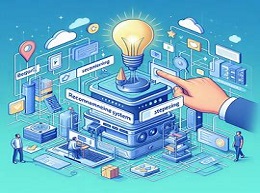Introduction to Federated Learning: Collaborative Model Training

In the realm of machine learning, Federated Learning is emerging as a groundbreaking approach, transforming how models are trained collaboratively across decentralized networks. This article introduces readers to the concept, delving into its principles, applications, and the promising future it holds for the field.
1. Revolutionizing Model Training with Federated Learning:
Embark on a journey into the revolutionary landscape of Federated Learning. Understand the core concept of collaborative model training across decentralized devices and the shift from traditional centralized approaches.
2. How Federated Learning Works: Decentralizing Model Training:
Delve into the mechanics of Federated Learning. Explore how machine learning models are trained across multiple devices without transferring raw data, preserving privacy while collectively improving the model's performance.
Example: Smartphones collaboratively training a predictive text model without sharing individual typing data, enhancing the accuracy of suggestions.
3. Privacy-Preserving Model Training: Safeguarding Sensitive Information:
Explore the privacy-centric nature of Federated Learning. Discuss how the decentralized approach ensures that sensitive data remains on users' devices, addressing concerns related to data privacy and security.
Example: Healthcare institutions using Federated Learning to train predictive models on patient data without transferring individual health records.
4. Applications of Federated Learning: From Smartphones to Healthcare:
Examine the diverse applications of Federated Learning across industries. Discuss its relevance in scenarios ranging from improving smartphone functionality to enhancing healthcare diagnostics and personalized services.
Example: Collaborative training of a fraud detection model in the banking sector, where individual transaction data remains on local servers.
5. Challenges and Solutions: Navigating the Federated Frontier:
Delve into the challenges associated with Federated Learning. Discuss issues such as communication constraints, non-IID (non-identically distributed) data, and potential solutions to optimize collaborative model training.
Example: Addressing communication bottlenecks by employing edge computing in Federated Learning for faster model updates.
6. Federated Learning vs. Traditional Approaches: Contrasting Paradigms:
Compare Federated Learning with traditional model training approaches. Discuss the advantages, including privacy preservation and decentralized efficiency, while acknowledging potential drawbacks and limitations.
Example: Contrasting Federated Learning with centralized cloud-based training, emphasizing the shift from data aggregation to distributed learning.
7. Federated Learning Frameworks: Enabling Decentralized Collaboration:
Explore popular frameworks that facilitate Federated Learning. Discuss tools and platforms that empower developers to implement collaborative model training across various devices and domains.
Example: TensorFlow Federated providing a framework for developers to build and deploy Federated Learning models seamlessly.
8. Scalability and Performance: Unlocking Federated Potential:
Examine the scalability and performance aspects of Federated Learning. Discuss how this approach caters to large-scale applications while maintaining efficiency in model updates and collective learning.
Example: Federated Learning enabling the training of recommendation models for a vast user base in an online streaming service without compromising performance.
9. Federated Learning in the Future: Shaping Intelligent Collaborations:
Discuss the future prospects of Federated Learning. Explore how this collaborative model training paradigm is expected to play a pivotal role in the evolution of artificial intelligence, edge computing, and decentralized machine learning.
Example: Federated Learning contributing to the development of intelligent Internet of Things (IoT) ecosystems, where devices collectively learn and adapt based on user interactions.
Federated Learning stands at the forefront of a paradigm shift in machine learning, emphasizing collaboration, privacy, and efficiency. As this approach continues to evolve, it holds the promise of shaping a future where intelligent models learn collaboratively across decentralized networks.
Explore the future of model training with Federated Learning. Dive into collaborative insights, real-world examples, and the transformative potential of decentralized machine learning for a smarter, privacy-focused era.














